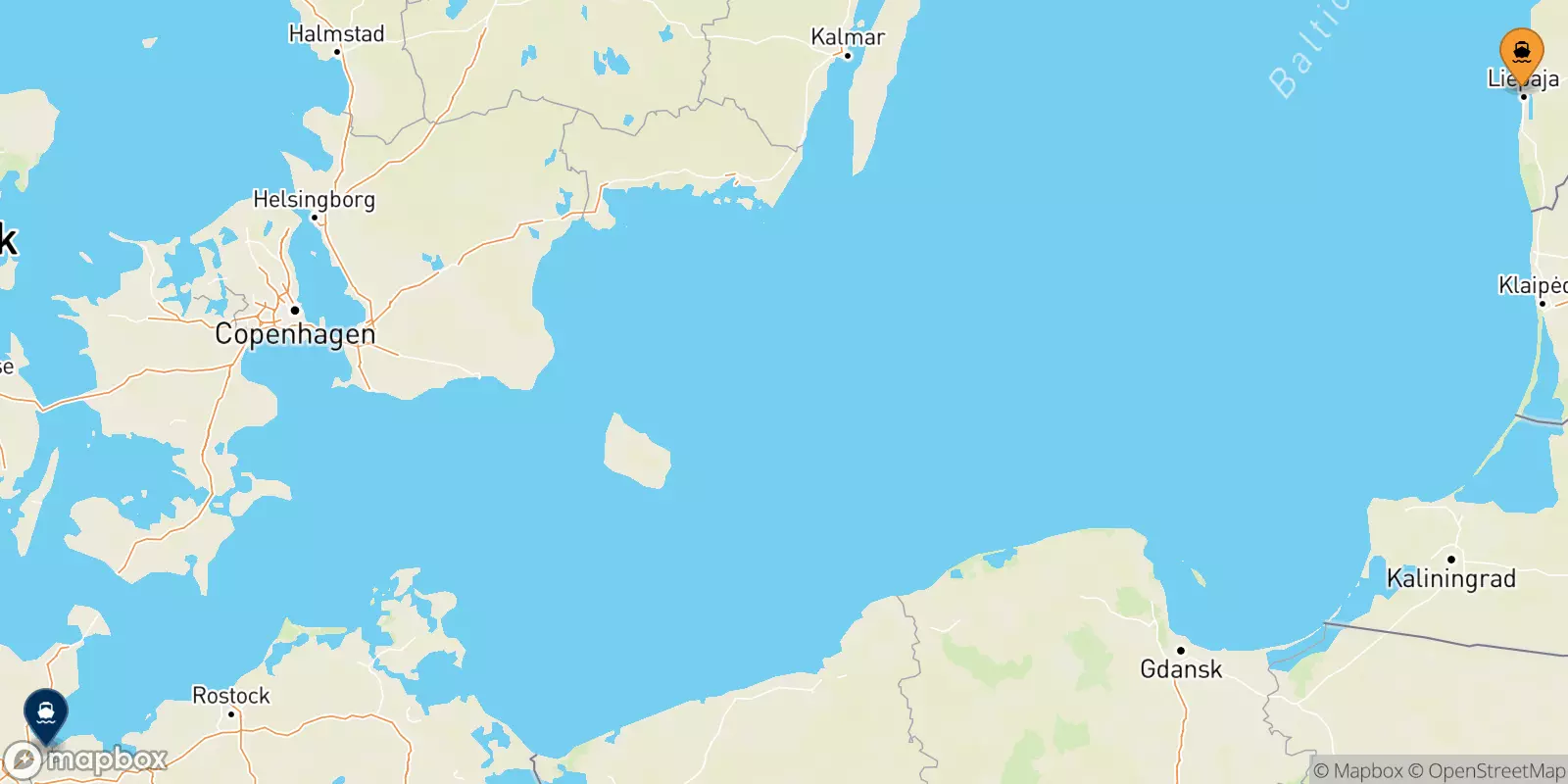Ferries from Liepaja to Germany
Offers, Timetables and Prices


Book your ferry from Liepaja to Germany using our Germany ferry booking system. Our portal allows you to find the ferry routes to Germany departing from Liepaja with just few clicks, including timetables, crossing duration and ticket prices.
The crossings between Liepaja and Germany are served by Stena only with a schedule of 17 weekly connections with mainly morning and afternoon departures and maximum duration of 22 hours. This line allows you to transport cars, motorbikes, campers and trucks - when boarding, simply follow the instructions at the departure port. Various services and accommodation are available to provide you with comfort on board. You can enjoy a meal at the self service restaurant or in your cabin.
Have you already decided on your destination? Book your ticket now in just a few steps!

Liepāja is a port on the eastern coast of Latvia, it has an important ice-free port. The population of Liepāja is 69,443 people. The port serves as a gateway to Western Europe, with two weekly crossings to Travemunde in Germany that take around 27 hours. How to get to the ferry terminal Coming from Riga take the A9 road, following the signs for "Osta". At the intersection follow the sign for “Brivosta”, turning right here and staying on the road. Continue along here until you cross the railway tracks, then take a left when you see a sign for Liepāja Ferry Terminal. If y... [More information]
Address: Terrabalt terminal, 14a Brīvostas Street, Liepāja, Latvia, LV- 3405
Directions: Google Map @ Liepaja, port
Germany is in the heart of Europe and is a leading country in the European Union. It is country rich in green and breathtaking landscapes, with the German Alps to the south and the black forest in the northern plains to the Baltic Sea coast. History Inhabited by the Celts then Germanic populations until 1806, it was a medieval empire resulting from the division of the Carolingian Empire. In 1814, with the fall of Napoleon, the Germanic Confederation was established during the Vienna Congress. Germany also experienced dark periods of history such as the Third Reich until 1945. Subsequently the ... [More information]